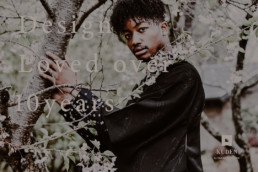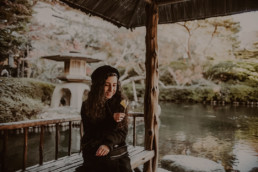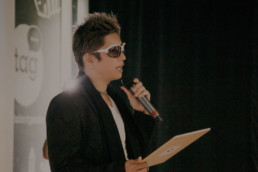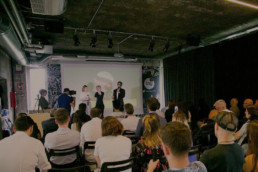Bringing Japan to Italy: episode 02 – Masami Suda
Here we are with the second appointment of our Bringing Japan to Italy series, where we interview characters who help spread Japanese culture in Italy and around the world.
After the great success of the first episode dedicated to Alberto moro, today we share with you our chat with Masami Suda, character designer of many anime including Hokuto no Ken (Kenshiro), dr Slump and Arale, Yo-Kai Watch, Mach Go Go Go, Candy Candy, Kagaku Ninjatai Gatchaman F, Ai Shite Knight (Kiss me Licia) and many other works that have marked the childhood of many now adults in the world.
We wish you a good viewing and we are curious to hear your comments!
Japan Italy Bridge interviews: KUDEN - Part 2
Here we are again with the second part of our interview with Takahiro Sato, CEO of Gerbera design Inc. and KUDEN. If you haven't read the first part yet, click here to read it! Without further ado, let's move on into the rest of what Takahiro Sato shared with us.

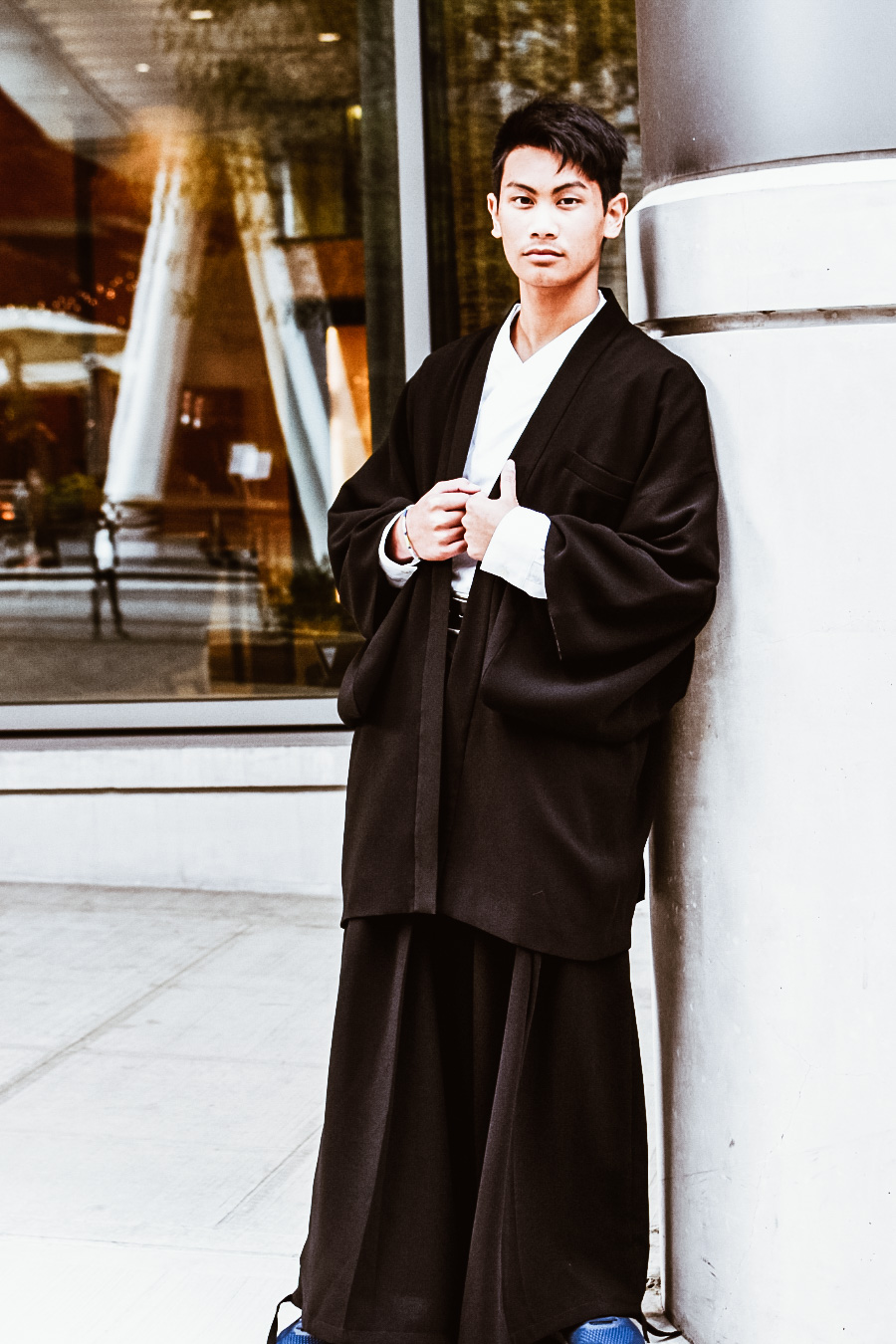
ーー I believe that there are difficulties to overcome when it comes to growing a global presence. Can you tell us about them?
I feel that expanding the business while overcoming different cultures, customs, and interpretations is a very difficult challenge. During these few years, I’ve come to realise that there are 3 main points while I’ve been trying out different methods to actually expand my business overseas. These are what I focus on while working on my business:
1. A shared vision based on universal values
I think that what’s important to achieve international success in this era of information overload is to come out with a vision that is based on the brand’s world view, values, and its reason for being. This is vital for the brand to turn customers who share its values into its fans.
What’s crucial in this is to focus on ‘universal values’ which transcend differences that countries and cultures may have between each other. I feel that this is no longer an era where we should aim to become a big business that mass produces and aims to be loved by the masses. I believe that what’s essential to expanding my business overseas is to be something that will be loved by people who shares our values for a long time in the years to come.
2. Transparency
I think that consumers these days seek transparency. I’ve had long years of experience in the advertising and design for a games and toys maker, and I’ve felt the change in the role of advertising and design that came with the change in consumers.
To me, the original purpose of advertising and design was to be a ‘means of communication’ that informs consumers about the essence of target thing or service but in this era of high economic growth, consumption itself is king. In these past few years, the trend for advertising is to create what is considered as good, consumable advertising with fanciful packaging that has to be further emphasised with words and visuals on top of the original goods or services. However, I think it can be said that this has already become a dated way of thinking.
Is the price appropriate? Is the quality as advertised? Is this something I need? Is the way the product is presented or provided true? I believe that questions like these are what consumers in this era ask and this is what they have come to value and consider as important.
3. Providing an experience
This is an era when all information is readily available on the internet. It can be said that people living in this modern era are constantly showered with information which they get almost immediately, be rich content from videos and photos, or simulations in VR and AR. Simply coming into contact with a large amount of information can make a person feel as if they know everything, but that doesn’t satisfy a person’s innate desire to be emotionally moved by things.
There is a phrase in Zen ideology that says “spiritual enlightenment only comes through personal experience”. Here, I would like to quote Takuan Sōhō, a major figure in the Rinzai school of Zen Buddhism who was featured in the manga Vagabond, written and illustrated by Takehiko Inoue who is best known for the manga series Slam Dunk.
Takuan Sōhō spoke of the importance of personal experiences metaphorically, saying, “You won’t actually become wet even if you explain what water is, neither will you actually turn hot even if you explain what fire is. It is the same as being unable to properly understand what they are unless you touch real water or actual fire. It is the same as how talking about food will not make hunger go away”.
“Seeking experience is fundamental of humans”
Already, there is a trend where people are seeking real experiences. I feel that aside from information, people have begun to seek value and consumption of ‘experiences’. Going forward, I expect that things will be further bi-polarised and the affluent will increasingly seek not virtual reality but instead real life experiences, and it is with this desire in mind that I started my business.
All in all, these are the 3 points that I consider while growing our global presence.
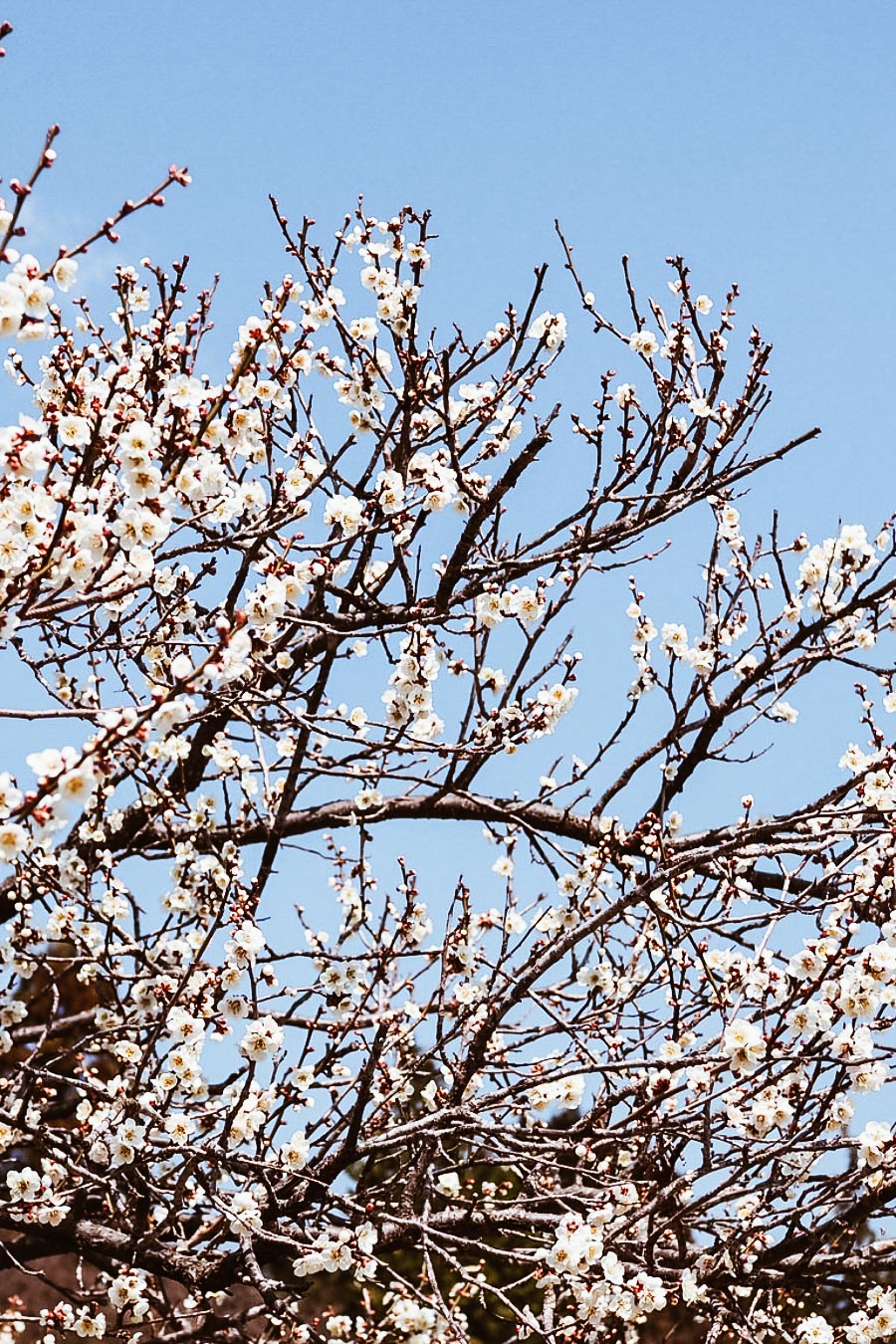

ーー Do you personally think that Japan is attractive to Westerners?
I can’t give a sweeping statement, but in my opinion, it is a ‘yes’. It can be said that Japan is a country that Westerners who have an interest in or are in the profession of food, architecture, traditional crafts, and arts would want to visit at least once in their lives.
Nikko, the place where I was born is also one of the bases of KUDEN, is a place with numerous local shrines being recognised as World Heritage Sites and three of our most significant buildings are Futarasan Shrine, Toshogu Shrine, and Rinnoji Temple. With a large land area of 51 hectares in assets and an additional 373 hectares of Buffer Zone. Nikko is a place where people’s faith comes together with the majesty of nature.
On Mt. Futarasan (Mt. Nantaisan) is Futarasan Shrine which was built to worship the various mountain gods, while Mt. Nikko Rinnoji Temple is a place that has more than 1200 years of history, and Nikko Tosho-gu Shrine itself is a magnificent masterpiece built by genius artists and architects of 17th century Edo.
Chuzenji Lake in Okunikko is a place where many embassy villas and houses belonging to different countries are located. People used to often gather in Nikko in the past for summits and yacht races, and it could be said that the nature of this locality has always been ‘international’. Even now, the Italian Embassy House Memorial Park, a wonderful building that symbolises the fusion of Italy and Japan, still remains. Perhaps one day, I’ll hold a KUDEN fashion show there.



Speaking of craftsmanship, when I first established KUDEN, I teamed up with artisans who are skilled in ‘Kumiko’, a technique used to create intricate, wooden, functional artwork, to design a project called ‘KUMIKO Laptop Board’. This was KUDEN’s very first product, but because it was something that had to be hand made, one by one, by elderly craftsmen, it was very time consuming to make and cost a lot to produce, resulting in it not selling well. However, this project resulted in me getting interviewed by various media outlets and even gaining attention on Reddit where people thought that the Japanese craftsmen’s handiwork was so fine and elaborate that it could have only been done with a laser cutter. They couldn’t believe that it was all made by hand. This led me to believe that if someone likes architecture and craftsmanship, they are also bound to be interested in this country called Japan.
I also believe that there are a lot of people who are familiar with Japanese games and animation. One other base of KUDEN’s is Tokyo’s Kichijoji. Here, the Ghibli Museum is located near to Inokashira Park. As someone who once created games and was in charge of game advertising in a game-making company, this is something that I feel deeply about. I do hope that people will come to Japan and get a taste of Japanese games, manga, animation, and other areas of local pop culture for themselves.
Another one of Japan’s charms is the rich variety of “food”. The skills exhibited by Japanese chefs with their sushi, tempura, and other cooking skills, along with the craftsmen who support them with the forging of cooking utensils for them like knives, are not to be missed. The people are kind. But I guess most of them can only speak Japanese. Despite that, I believe that if you muster up the courage to try and communicate with them, you’ll come to find that there are a lot of kind people around you.
Japan’s nature changes its expression from season to season. I do hope that you will try to visit us at least once.


ーー On the other hand, what do you think of Italy as a market?
Both Italy and Japan are countries who each have strong national brands. Japanese do have a preference for things “Made in Italy” too because the impression that we have of Italy is that things with such a label are those that are of as high quality as those labelled with “Made in Japan”. Personally, I feel that Italy and Japan actually have a lot in common. The people of both countries value craftsmanship, and love food and arts as well.
There was a period of time when I was unable to consider or call myself a 'designer', and during that time, I borrowed the word 'progettista' from Italian and gave myself that title. The Italian way of making things has always been one that felt appropriate to me.
I am presently designing leather sandals under the motif of Japanese style, and I could not be happier if I would be able to use ‘Made in Italy’ leather for this. I have a dream of one day opening up KUDEN haute couture boutique in Milan and have customers make clothes out of fabrics that they pick out. I would be truly honoured more and more people in fashionable Italy wore my clothes.
ーー Going back to KUDEN, what are your future plans and goals?
KUDEN aims to become a project that ties the employment of people with disabilities with artisan professions, like those in garment production or woodworking, through an “Apparel Brand + Employment of The Disabled” model. The final composition of the company will include the following components: KUDEN Apparel Brand, design office, garment and woodwork production, distribution hub to overseas, and company dormitory where people with disabilities can live in. To reach this future goal of ours, I am now focused on expanding KUDEN by TAKAHIRO SATO overseas.
My beloved son is the reason why I am to be “a manager that highly values people”. As mentioned before, I have once ended up neglecting my health by working too hard and as a result folded my company. I was a no-good businessman who caused trouble for my staff and my customers and ended up being separated from my beloved family back then. Despite all of that, to support my son’s future, I restarted my journey as an entrepreneur and now I also continue on for the sake of the staff of Gerbera Design who lent me the strength to hold on to this dream.
As someone who has had such an experience, there are a few things that I keep in mind as I take on this challenge again.


The first point is the creation of an operating foundation that doesn’t rely on things like grants or handouts. The second point is to create a foundation that will not be influenced by the economies of the foreign currencies that we trade in.
These two points are measures that will aid enhance the going concern of the company. These came to mind because when I was with the major toy-making company, there was a time when I was involved with the employment of people with disabilities there, and I’ve gone through the painful experience of closing offices and dismissing people because of company policy changes. At the same time, considering Japan’s declining population numbers and the recessive economy, relying on Japan’s tax money and the domestic economy to run a business will probably bankrupt it too.
The third point is the desire to nurture not only disabled persons but also youths who wish to support them and such endeavours.
This is largely out of my personal ego. I cannot raise my adorable son with him close to me, but I dream of being able to work together with him in future. My son, Takeru is only 8. Even if I pass away, his life will go on. I do all this to minimise the possibility of the company collapsing or its direction changing after I pass, as my son can only receive support from someone or the country. As such, while I am still around, I’ll foot taxes for him and help the younger generation, and then entrust them with things after I am gone.
The fourth point is the desire to increase the number of work options for the disabled as much as possible so that they can do what they enjoy doing.
During my involvement in recruiting disabled persons, I had the opportunity to observe things and saw them baking bread, folding clothes in the backyard, cleaning up, and so on. I came to realise that there is work that they can do, and now, instead of having my son and other children like him only think about how cool designers, programmers, craftsmen, and other professionals are, I want to let them cherish their aspirations and give them the chance to be in any profession they want.
From primary industries like forestry and agriculture, craftsmanship and design, and finally to overseas sales. We are small, but we are in the midst of building a well-rounded business. In terms of craftsmanship, we have already introduced the employment of disabled persons to my friends who are artisans who are experiencing a lack of successors. KUDEN is expanding overseas to support this and I intend to persevere and spend the rest of my life working to create a place where my son and other children like him can work with joy.
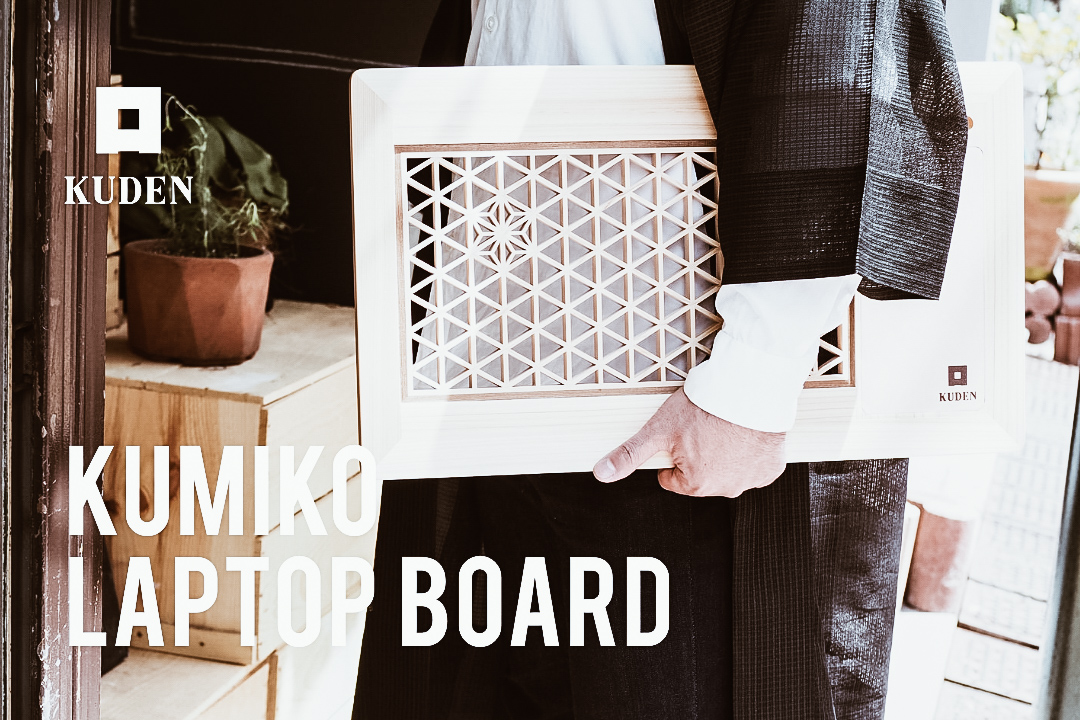
ーー We do hope that you will be able to fulfil your dreams and achieve your goals too. Lastly, please leave a comment for our readers.
KUDEN has a dream. In the pursuit of the happiness of our staff, our customers, and our stakeholders, we continue to work on creating jobs by connecting disabled persons with craftsmen through design. We bring designs that can be loved for more than 10 years into the world to change it, and we work hard towards becoming a brand that will be loved for a hundred years. All the effort that we have put in resulted in our first line of clothes which we want modern day Samurai to wear.
To me, “wearing” clothes is like putting on a second skin to me. Clothes symbolise the era in which its wearer lives in and they are like an expression of a person “wearing” their values, desires, and hopes for the future.
In this era that we live in, things come and go very quickly. In my daily struggles as a businessman and a designer and a father as well, there are times when I succumb under the workload and the pressure and start to feel disheartened. There are also times when I lose sight of my path and my values too. Doesn’t everyone feel that way sometimes?
In such moments, wearing these clothes, we’ll straighten our backs and harbouring the spirit of the Samurai with dignified appearances, rise up motivated with the resolution to keep the faith and follow through with all our hearts. I wanted these clothes to be outfits that can express this version of you and me to the people around us, and thus I named them ‘Samurai’.
Be it in Japanese animation, manga, or historical films, I’m sure that everyone has seen them at least once before; Samurai who live life by staying firm to their convictions.
“I am just a strong, kind, and resolute Samurai. A modern-day Samurai.”
You will become a modern-day Samurai.
We present to you the Samurai Mode Jacket, a piece of clothing that expresses your self like a second skin, that can be worn casually on normal days or for formal occasions and even in important business settings. This was designed with the hope that it will be clothing that is desirable to people of all ages, genders, and nationalities around the world who want to live by standing fast to their values and beliefs, who are working hard for their loved ones in this busy, fast-paced world. I believe that when you wear it, you will be able to feel the power in the design of these clothes.
Going forward, I intend to continue designing and producing clothes that bring joy to everyone with this conviction. We may be a small brand, but I will keep fighting with the Samurai spirit.
And that was our intimate interview with CEO Takahiro Sato! Having read it, how do you feel? What do you think? Do share your comments with us on our Facebook page!
Also, before you go, do know that the Samurai Mode Jacket mentioned in the interview is now available in their online store alongside their newly released Samurai Mode Shirt! They do also offer gorgeous vintage Kimono and Haori in their store, so do make sure you check it out! You never know what you may find!
- Contact -
E-mail: support@ku-den.jp
- Links -
Website: https://ku-den.jp/
Facebook: https://www.facebook.com/kudenjp/
Instagram: KUDEN by TAKAHIRO SATO | haoru by KUDEN
Japan Italy Bridge interviews: KUDEN - Part 1
We are pleased to kick-off our initiative, “Japan Italy Bridge interviews”, which introduces one-of-a-kind Japanese companies to the world, with a special interview with the CEO of Gerbera Design Inc., Takahiro Sato.
Gerbera Design Inc. is the company behind the fashion brand KUDEN by TAKAHIRO SATO which ran the massively successful Kickstarter campaign for their Samurai Mode Jacket. The campaign was so successful that it was funded more than 1000% of its original goal, and has garnered much attention from various media outlets all over the world. On this occasion, we have been given the opportunity to speak to the man behind this runaway success to find out more about his story, the future of his brand, and his thoughts about Japan and Italy.

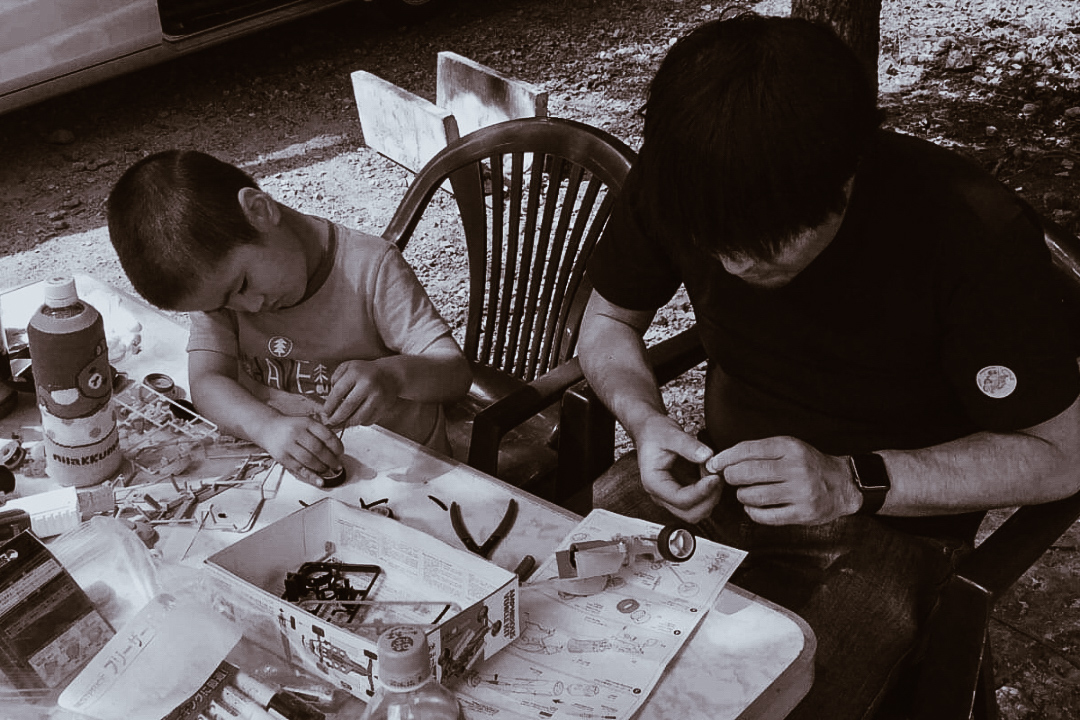
ーー To start, please introduce yourself and your company.
Hello. I’m Takahiro Sato, the designer of KUDEN by TAKAHIRO SATO (below, KUDEN) and the CEO of Gerbera Design Inc. (below, Gerbera Design). You may call me Tak.
Utilising the experience that I have gained through the loss of a previous business and my years of running a business in the entertainment industry dabbling in games and toys, I started up Gerbera Design, a company that provides consultancy services to new businesses while also producing creative works as part of our operations.
With the hope that I can create a place where I can work together with my son, who has autism and mild intellectual disability, in future, I launched the apparel brand, KUDEN, under Gerbera Design as a new business with to reach out to an international market.
ーー What drove you to start this business?
The beginning of my business endeavours was the first time I started a business in 2007. It was a design company that I established as a proprietor. At the time, it was found that both my parents had cancer and since I had to take care of them, I, who was working at a large corporate group in the business of toy and game-making, quit my job and began my journey as an entrepreneur.
Despite the hard work that I put into the design company that I ran, the company collapsed and the business folded. Back then, I was a terrible businessman who caused problems for my staff and customers and even ended up living apart from the family I love.
What convinced me, a person who has met with such a big failure, to try again as a businessman was the resolution to create a place where I can, in future, work together with my son who has autism and mild intellectual disability, who I’m now separated from. However, I feel that Gerbera Design’s present operations in management consultancy and the creative business are not activities that are suitable for people with disabilities to be employed in. And so, I continue to look for new business avenues.
During my search for a new business, I began to think about what the future desires and what I can do as a designer to fulfil that. As a designer, I cherish the things I use and I take good care of them. I personally love long-life designs, and when I thought of wanting to start a business that brings such designs into the world, I found the kimono that belonged to my late mother. Looking at it, I was inspired and felt that it would be interesting to reestablish and redefine the modern kimono, to design something that would make people feel “I want to wear it”. This is the spark that brought the Samurai Mode Series to life. These clothes were then marketed to the world under the brand KUDEN by TAKAHIRO SATO.

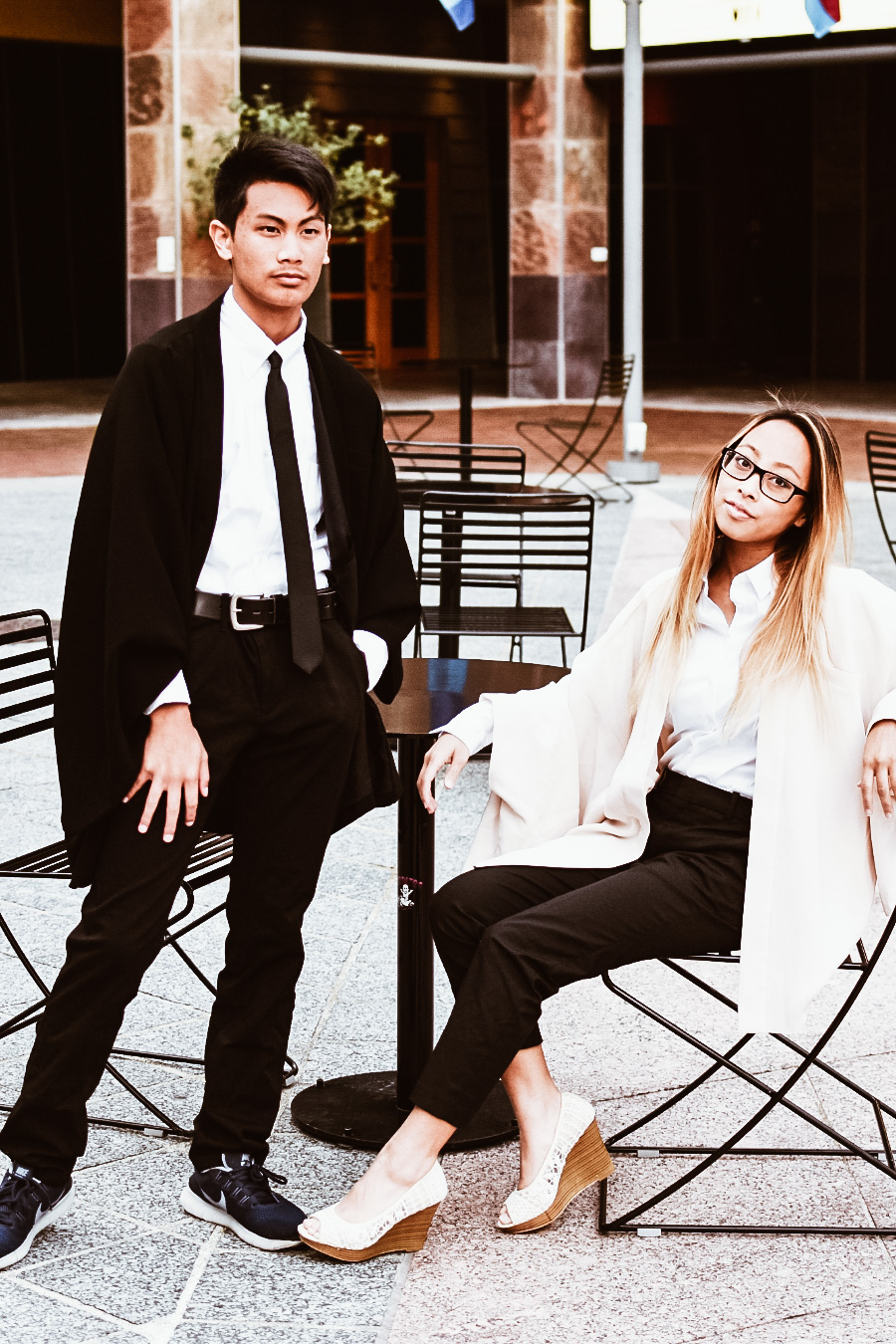
The reason why I expanded the brand with the international market as our main target is that I wished to create a place where my disabled son can work with me, and thus strategized to establish a company where disabled persons can work and be employed in.
Considering that Japan’s has problems like its declining birth rate and ailing economy, I doubt that support for handicapped people like my son become better going forward. Even for able-bodied persons like me, difficulties are on the horizon as there is talk that the government will not be able to undertake our pension and social security.
With all of that in mind, I cannot only focus on the local market and thus have to make the company profitable with an overseas customer base. Otherwise, even the younger generation employees who we employ will have to eventually be let go. To prevent this from happening, I established this business right from the beginning, from its start-up phase, with a focus on the global market.
I still have a long way to go, but as this is the one promise that I have made to my son, I will definitely fulfil it before my time is up.
ーー What do you pay particular attention to in running this business?
As someone who has folded a business once, the one conviction that I keep in mind as I try again as an entrepreneur is to be “a manager that highly values people”; be it my staff, my customers, or my partners and associates. This is an ongoing effort that pursues the happiness of my stakeholders and puts the long-term continuity of the business first instead of focusing on short-term results or gains. This, in addition, demonstrates my resolve and strong will to bring happiness to socially disadvantaged people, like disabled persons and the elderly, through employment and trade.
The reason behind these beliefs of mine is the bitter experiences that I’ve had. Long working hours has become a social problem in present-day Japan and I, too, have experienced overworking myself to the point of collapse and losing my company. I’ve also experienced the reality of my ex-wife divorcing me because of the tough times I’ve put her through, thus having to live separate from my son but I should not have let things happen like this. Even though I was working for the sake of my family and my employees, I ended up losing everything. The regret weighs heavy on me. I do not wish for my staff nor my customers to experience the pains of destroying their health and losing their family by overworking. Based on these feelings and my experience with my previous company, I corrected things and applied new methods of working and operating.
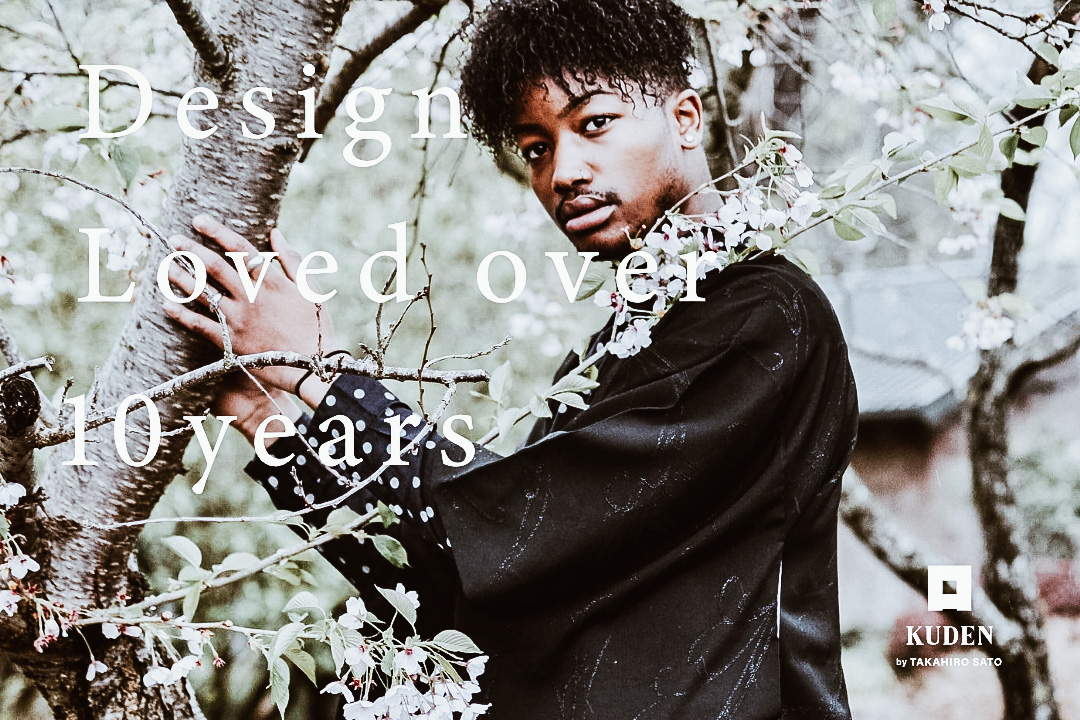
My company operates on a 4-day work week which allows for 3 continuous days of rest in a week if we can complete our work. Using these rest days, there are staff in my company who are fathers who, for the first time, can find time to spend with their children. There are also others who can visit Disneyland with their partners every Friday, who take lessons during weekends to work towards their dream of becoming a voice actor, and there are those who, like me, live apart from their disabled children, who can fulfil the needs of their children as and when needed. I want them to do more than just work. I want them to live and experience life too. I am still exploring methods of operating and earning that will make these goals a reality through trial and error. Contract jobs are widespread in design companies, and realising these goals of mine will reduce such positions in my company, at the same time converting my business model into one that provides both management consultancy services and creative production.
When I fell ill after my previous company closed down, I thought about a lot of things while lying in that hospital bed. I realised that most of our sales were generated by a few customers who made up the top percentage of our clientele. It was then that I decided that I would only go through the trouble to please the customers who appreciate our work and are happy to pay for it, thus changing the focus of how I work and making this possible. Basically, methods of earning that have exceptional methods of working have to evolve with the times. Otherwise, we won’t be able to rectify issues, like long working hours, which become pain points. We’re taking small steps, but I’ll continue to work with my staff to look for methods that work.
The next step is to be “a manager that highly values people”, and in expanding my new business, KUDEN, I have first started with the garment factory to connect craftsmen with the employment of disabled persons, and taken on the challenge of pushing forward the business as one that cherishes all the stakeholders involved. Others may laugh at me and call me naive, but I am committed to this.
<Reference materials>
The operational improvement of Gerbera Design Inc. (formerly, Sato Creative Design Office Gerbera) was featured on the front page of The Tokyo Shimbun's morning edition in December of 2016 as a part of author and work-style critic Yōhei Tsunemi’s book on business practices of small and medium enterprises, “なぜ、残業はなくならないのか(祥伝社新書)”.
【探訪 都の企業】
<働き方改革編>(上)出社週4回、8時間勤務 会社の稼ぎ方変える
Explore: Business in the city
<Work-style reform edition> Working 4 days a week, 8 hours a day: Changing how the company makes money
【なぜ、残業はなくならないのか(祥伝社新書) 】
Why Won’t Overtime Go Away? / Naze, Zangyō wa Nakunaranai no ka (Shōdensha Shinsho)
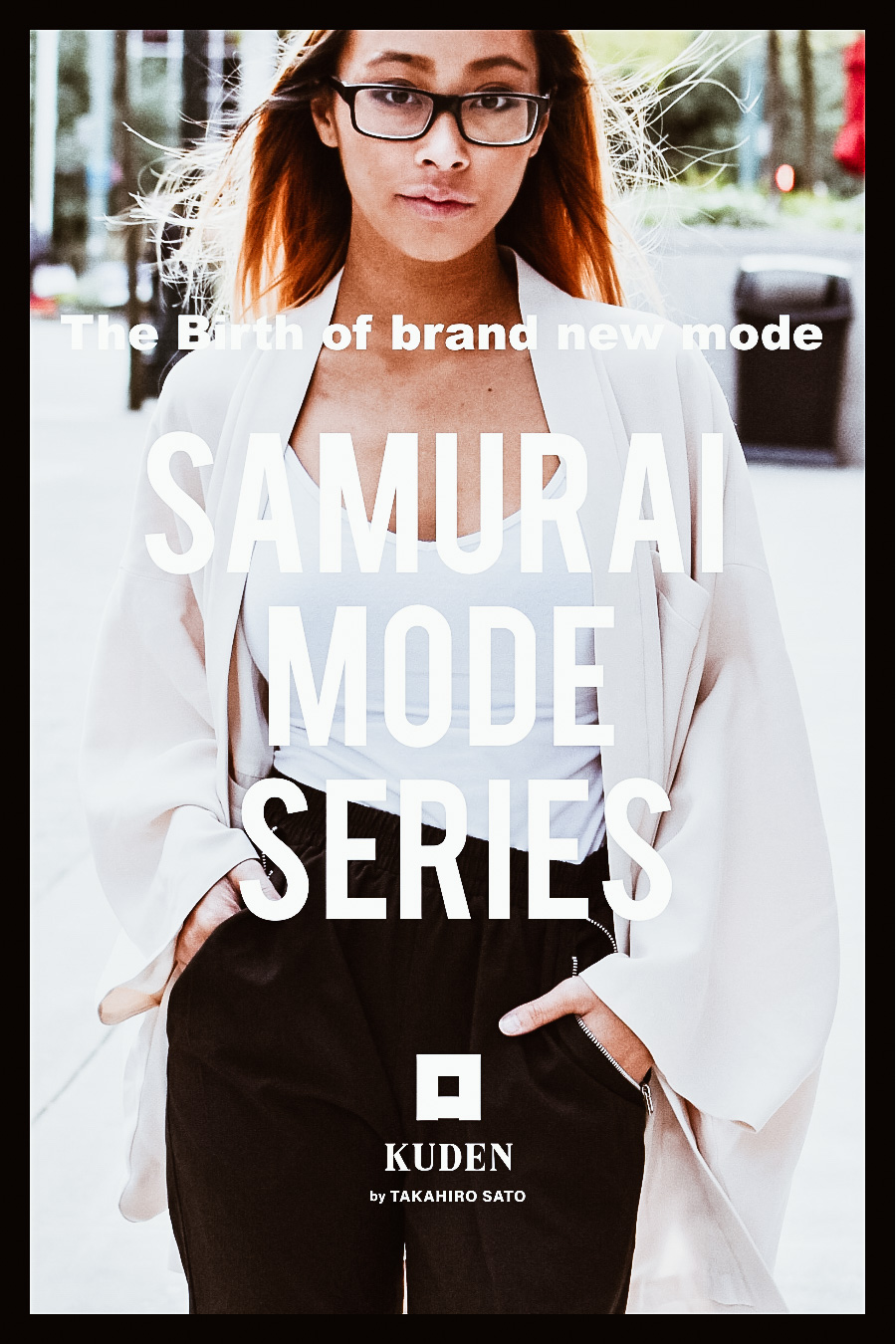
ーー How do you think the global market perceives KUDEN? Also, what kind of impression would you like the world to have of KUDEN?
I think that KUDEN doesn’t come across as a brand that is in the ‘fashion’ sphere to the global market. Instead, KUDEN is loved by people who feel that anime, manga, food, crafts, Zen ideology, arts, and other cultural aspects of Japan resonates with their own personal values.
While we’ve met with various difficulties during this time’s pre-order sale of Samurai Mode Jacket, my staff and I were deeply moved by the numerous messages that we’ve received from customers all over the world who told us how they were patiently waiting and looking forward to their jackets. They have encouraged me, saying that my desire to work hard for my son makes me a ‘samurai’ to them among other such heart-warming messages.
As a brand that doesn’t only cater to people who love clothes, the integrity and resolve that KUDEN possesses is what we call ‘being dignified’, and in English, we have named it as ‘thoughtful life’. I feel that this perspective that our brand has and the desire to connect the lack of craftsmen successors with the employment of disabled persons through design has allowed me to make kind and like-minded friends around the world who share my vision with me.
I want to step up my efforts and work harder so as to not betray the expectations of all these people who support these visions and perspectives of KUDEN.
And that was the first part of our intimate interview with CEO Takahiro Sato! Having read it, how do you feel? What do you think? Do share your comments with us on our Facebook page!
Also, before you go, do know that the Samurai Mode Jacket mentioned in the interview is now available in their online store alongside their newly released Samurai Mode Shirt! They do also offer gorgeous vintage Kimono and Haori in their store, so do make sure you check it out! You never know what you may find! Stay tuned for the rest of the interview and to read more about KUDEN's brand approach and future plans!
- Contact -
E-mail: support@ku-den.jp
- Related links -
Website: https://ku-den.jp/
Facebook: https://www.facebook.com/kudenjp/
Instagram: KUDEN by TAKAHIRO SATO | haoru by KUDEN
Bringing Japan to Italy: episode 01 - Alberto Moro
Here we are with the first episode of our new series『Bringing Japan to Italy』dedicated to Alberto Moro, Giappone in Italia Association's President.
Some weeks ago we met him during the finissage of his exhibition "Il mio Giappone" that, as he said himself, it's a great act of love towards this Nation, the Japanese culture and people.
With this first video, we are launching our new series dedicated to all those people that promot the Japanese culture and the world surrounding Japan in our Nation. Japan Italy Bridge, wants to promote this Nation on an even deeper level, together with its companies and all that concernes the land of the Rising Sun.
Enjoy!
Japan Italy: Next stop: Japan! Interview with Stefania Sabia
"An Italian in Japan" the series - Stefania Sabia
The brotherhood between Italy and Japan in recent years has become increasingly close and supportive. It is not rare to find our compatriots wishing to move to the land of the Rising Sun, but few succeed in realizing this dream. Today we want to share with you the experience of Stefania Sabia, a very Italian girl who has been living and working in Japan for about two years!
JIB: Hi Stefania, first of all thank you for agreeing to have this interview with us.
S: Thank you for contacting me and thinking about my blog!

JIB: Tell us a little about yourself and what you do in life.
S: My name is Stefania, I graduated in Japanese language and literature and I have been living and working in Tokyo for about 2 years.
I'm the creator of the Prossima fermata Giappone (Next Stop Japan) blog, which I opened together with the Facebook page 4 years ago, during my first study trip to Tokyo, followed by Instagram and Youtube about a year ago, which I update daily.
Since then I continue to share my travels and my daily life in Japan through articles, photos, videos, with all the love that I have.
I have a particular passion for the Shitamachi of the capital, the ancient places of Tokyo mixed with the modern urban fabric, but which retain a unique atmosphere, often accompanied by incredible small cafes.
I love the explosion of colors of the Japanese blooms, and the cute themed restaurants that invariably snatch you a smile and, when I have the chance, I love to wear the kimono.
Exploring and sharing this wonderful country always fills me with an immense joy.
JIB: How and from what your passion of Japan was born?
S: The passion for Japan arises as a result of the curiosity about the culture of this country. I have always found fascinating its history, folklore, literature and even the language. I could spend hours listening to the smooth sound of Japanese, relaxing as gurgling water.
One of the first legends to have enchanted me, I still remember that now, was that of the Tanabata.
As a child I dreamed of being able to participate in the festivities one day, to wear the yukata and see the sea of shimmering decorations above my head, typical of this occasion.

JIB: And in the end you made it! You have been living in Japan for a few years now, tell us something about your experience and how you got to today.
S: Living here in Tokyo is an incredible experience, sometimes difficult, but that in any case I would not change with anything else in the world. It can be a challenge, a trial, a surprise.
Living so far away from home there are many first times, you learn so many things about yourself and others, and what perhaps in Italy I had never done alone I found myself having to face it.
The part that I love most is undoubtedly the exploration, having the opportunity to know Tokyo deeply and calmly, to reveal the layers of the city first hand, all his anaba // the small locations, the secret corners, the places of heart. I love this city with all of myself.
I came to Japan for the first time 4 years ago, during my second year of university, thinking that a study period could help me with the language and the following exams. So I enrolled in a 3 month course at a language school in Nippori (one of the areas of Shitamachi I mentioned above) and have literally been struck by the capital.
With a heart full of feelings, I returned to Italy knowing that once I graduated I would have absolutely wanted to come back.
After graduation I left again as a student, with the intention of improving my Japanese as much as possible and try to get a job visa.
I got my 3-year work visa about 3 months ago and now I work in a Japanese company, I especially take care of helping other Westerners find jobs in Japan.
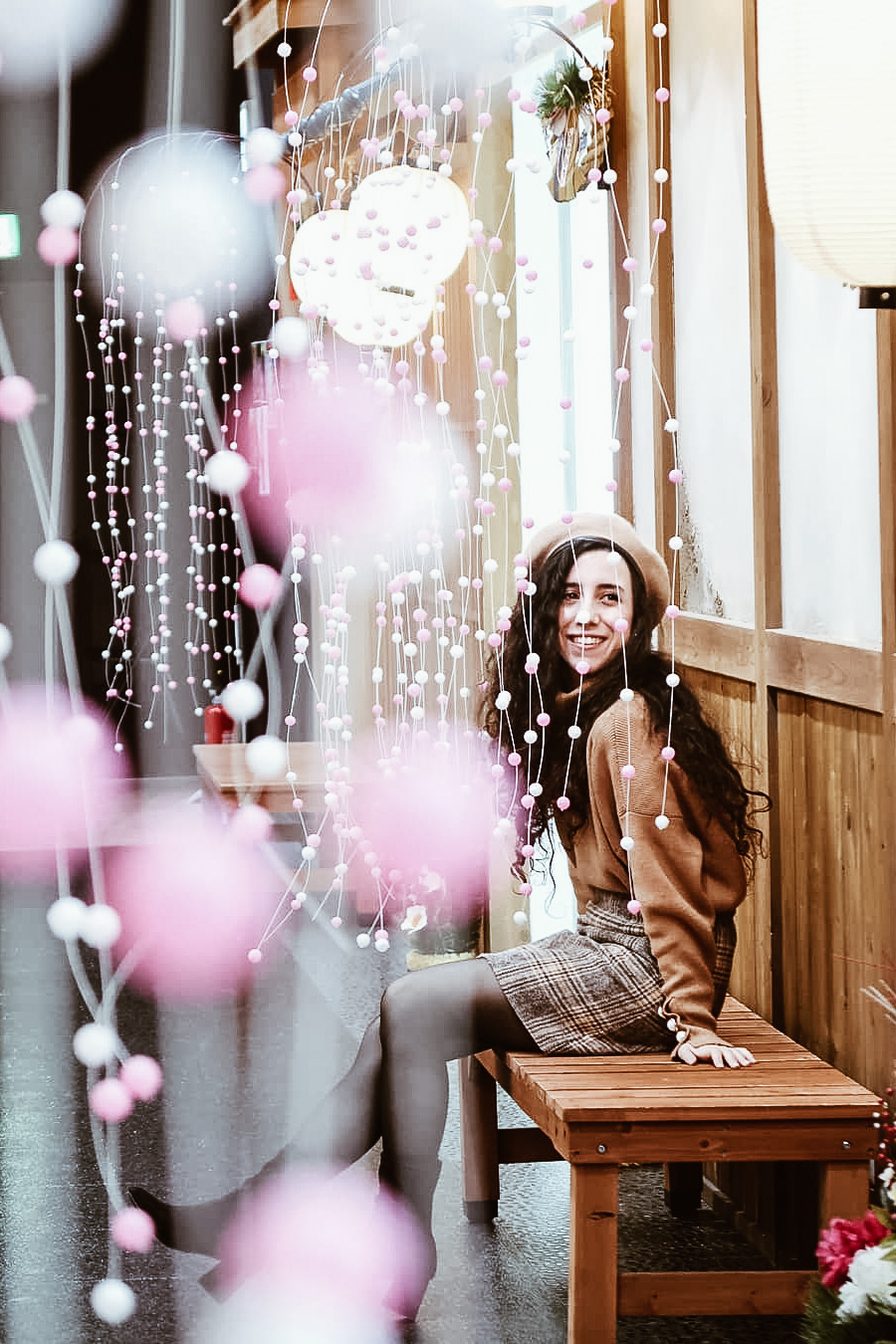

JIB: Which Japanese city has captured your heart?
S: Maybe you can already understand that from other answers, but I love Tokyo with all my heart. I think it's a unique city. A “patchwork” city, made of rainbow remnants of every kind and shape. An extraordinary interlocking of modern and ancient. It doesn’t have the typical beauty of traditional Kyoto, it has more the charm of the places that you live at the fullest. those places that are able to tell you a story at every corner, to amaze you again and again without ever failing. This city is a whole universe, you never stop understanding it, learning it.
If we talk about extraordinary places for beauty and memories, then I must mention Takaragawa Onsen, one of the most magical places I've ever been in Japan. I have wonderful memories of this ryokan with onsen, which seems to come from another era, lying in the middle of the forests of Gunma, very far from the city, next on the course of the river Takara. I also talked about it on the blog. It’s just pure marvel.
JIB: Your story is really exciting and we are sure that you can have unique experiences every day and create many memories that will always be in your heart. Would you like to share with us one of the most amusing or significant moments that have happened to you since you live in Japan?
S: One of my favorite experiences was to bring the mikoshi during the matsuri o my neighborhood. The feeling of community cohesion and the meaning of festivals is something fantastic.
It was incredible to be able to see a matsuri in its life, from the gathering of the participants, to the toast and prayers and have the opportunity to bring the divinity, inside the mikoshi, so that it could be thanked by everyone and therefore guarantee luck and prosperity to the district and its inhabitants.

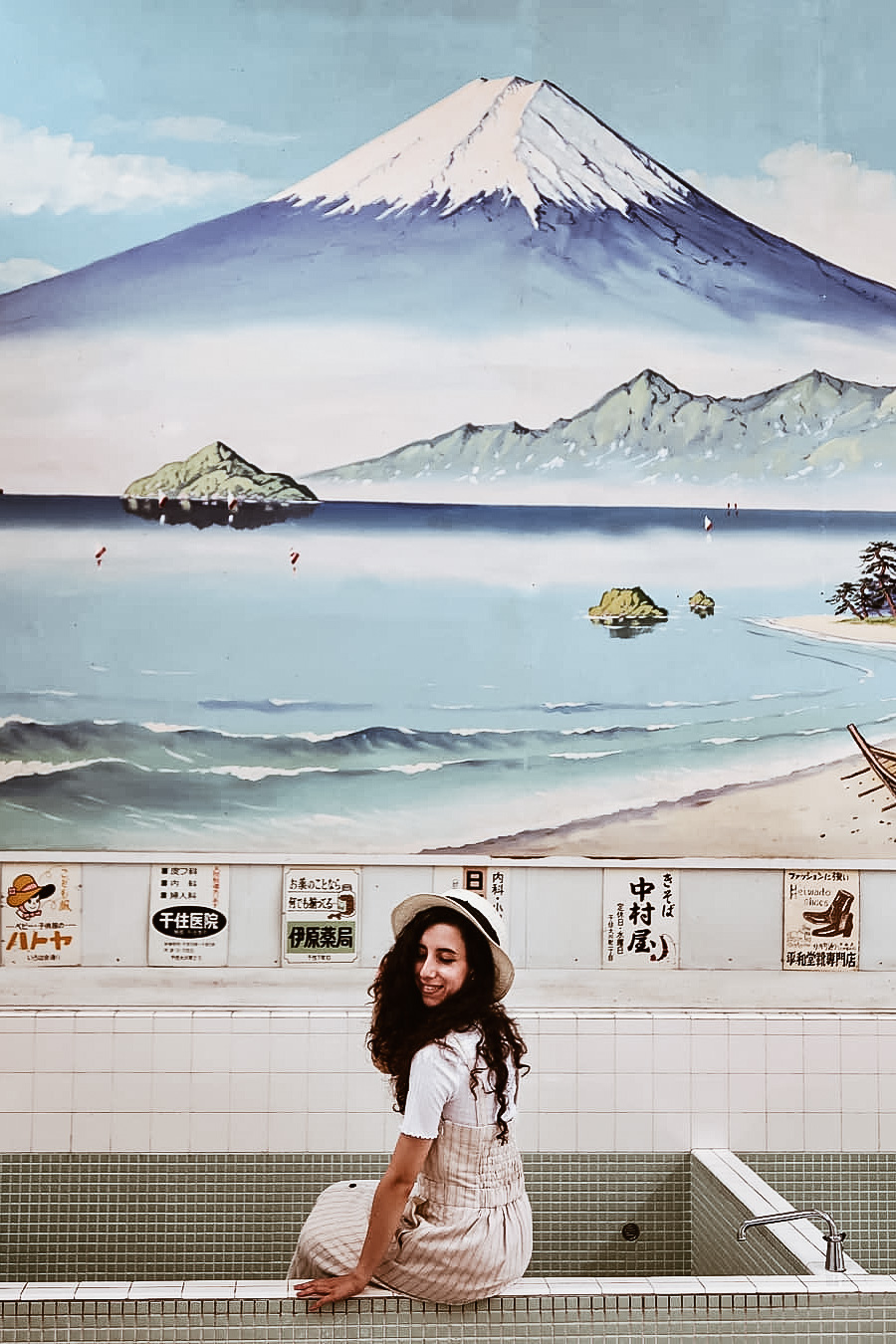
JIB: It must have been a really intense experience. Also, from what was our blog born, prossimafermatagiappone.com, and how did you develop the concept until you got to what it is today?
S: The blog was born from the desire to put into words the boundless love I feel for Japan.
I have always loved to write since I was a child, and I thought that telling stories about this country could connect and help many other lovers of Japan.
It's a travel blog, but it's often the feelings for places that dominate, a genuine and total enthusiasm for what I see or what I do.
The sincere affection for certain districts, the fascination that the ancient and the traditions exert over me, the places that sing to my heart. One thing, which I think and hope can be understood by reading the blog, is that I don’t write just for the journeys themselves, but for the emotions and the paths that I share.
I actually think that often, even a day-to-day and less visited or less famous place can reserve great discoveries and a lot of wonder.
The blog was born like this, from the sincerity of my feelings for Japan, for 4 years, almost every day I published stories, photos, itineraries, tips for those who are preparing to leave for a trip, to study or to live in Japan .

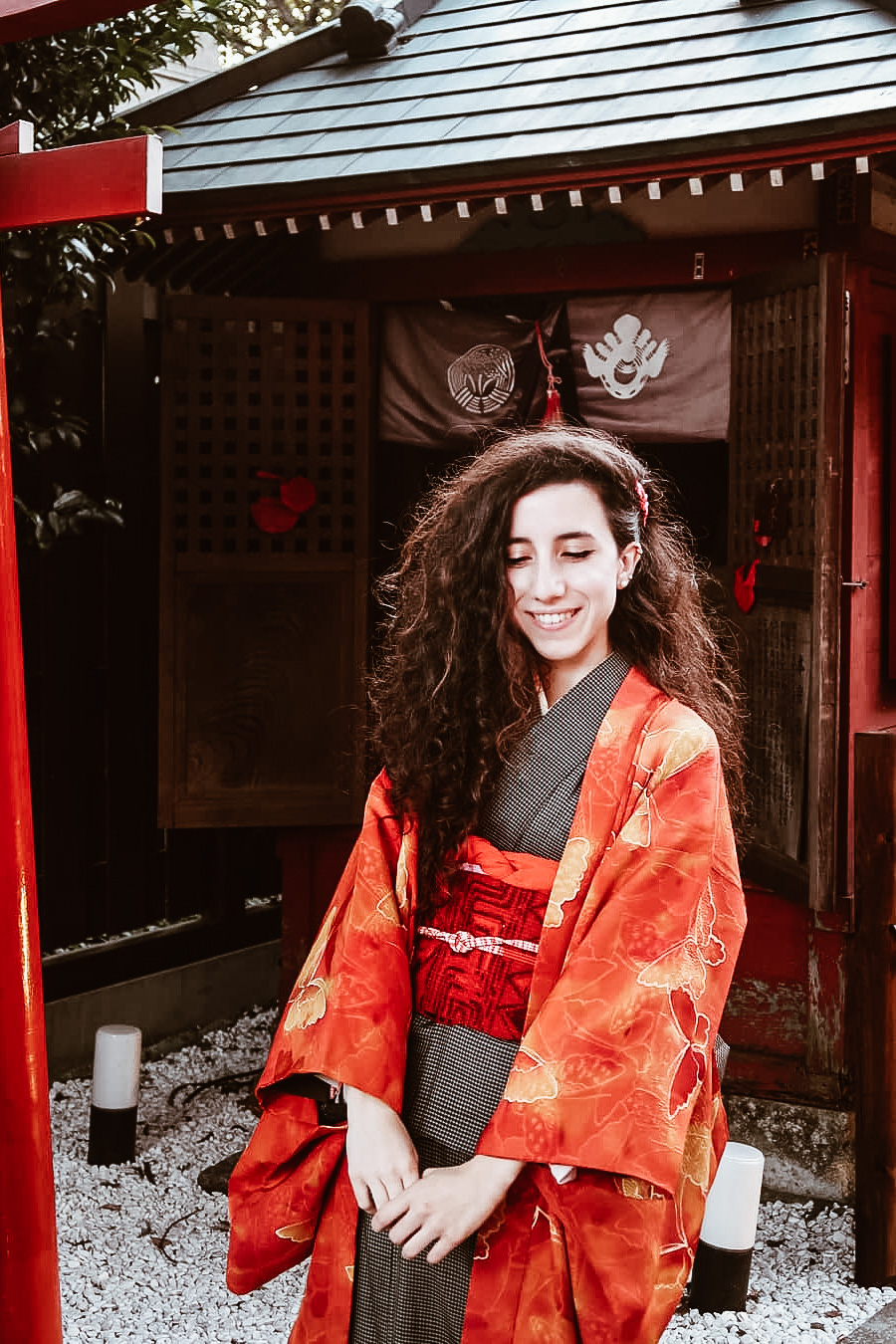
JIB: This feeling that moved you to create your blog is really beautiful, and that's another thing we have in common. So many people like us dream of living in Japan and walking the same path you followed. However, as we all know, all that glitters is not always gold, and even Japan, like any other country, has its ups and downs. What are the difficulties you encountered in the early days in the Land of the Rising Sun?
S: I have to say that I have never encountered enormous difficulties since I moved. Or rather, nothing that I could never overcome with a little commitment or anything that I consider particularly negative.
It's funny and of uncertain result the first times you find yourself having to do things that in Italy would have been considered normal and easy, but which instead represent the unknown here. For example going for the first time to the doctor, making a phone contract and later embarking alone in the contract for the house and having to call the services to connect the utilities.
The most difficult moment was the search for a job, those were really tough and challenging months, made even by many “no thanks” and many "Will I be able to do this? I won’t give up! ". The job market for a foreigner is not always easy.
Last but so obvious was the distance from home, I would certainly love to have the opportunity to see more often my family.
JIB: What are your plans for the future?
S: Even if time is scarce at the moment, I would like to work more with the blog. Collaborate more with local companies, propose more activities to do on holiday.
It would be nice to be able to show Japan more and more and I hope to have the opportunity to do this.
Another dream would be to write a guide, particularly on Shitamachi, the ancient preserved areas of Tokyo, survivors of fires, earthquakes and bombings, these areas still not very famous are of a unique richness. They are my favorite part of the city and I would like to talk more in depth if I ever have the chance.
Work wise, in future I would like to do more tourism experiences in Japan, I would really like to work in this direction.

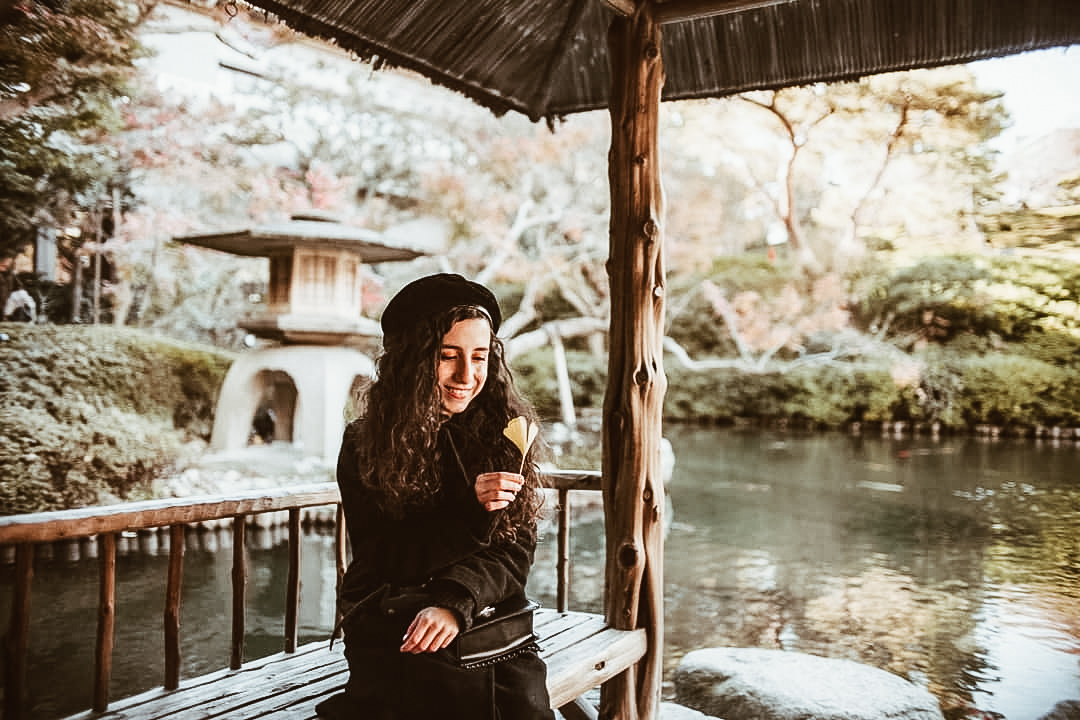
photo credits: @georgeyajima
JIB: It's really very interesting what you're sharing with us, and we too from Italy are convinced that we need more information about these particular areas of Japan, which are very often put aside by the masses . What do you think are the strongest connections you can find between Italy and Japan?
S: I think we are dealing with two deeply different countries, but surely both of them carry a thousand-year-old history, culture and traditions that are very great and fascinating. In both countries there is a great love for food, a great love for their artistic and historical background.
JIB: Do you think there is a future for an even closer collaboration between the two nations?
S: I hope so, especially from a tourism point of view, I think there is an increasing interest in Japan.
Italian tourists have been increasing for a couple of years and I hope that this mutual interest, this curiosity of travel, will open the door to new possibilities.
It would also be nice to have the working holiday for Italians in the future.

JIB: Do you ever miss Italy? Do you plan to come back here permanently?
S: As I said before, I miss Italy, my family, Italian friendships. If I didn’t have good Italian friends here it would be doubly difficult.
The other serious missing is the cured meats and cheeses (more than pasta and pizza that are very well done here), there is a very scarce and expensive selection for the most part. The sadness of not being able to make a mega salami sandwich!
Perhaps sooner or later I will return to Italy or Europe anyway, but for now it is difficult to say what the future holds for me. For the moment I would like to stay in Japan.
JIB: And we too hope you can stay in Japan! Thank you so much for your time and for the beautiful words and moments you shared with us. One last thing, send some greetings and advice to all our readers.
S: I thank you first for the interview, you were very nice to host me and it was amazing to have the chance to talk with you.
I would be really happy if more people could read the blog and find ideas, whether they are traveling or living in Japan, I am always available to help anyone who is looking for answers on the subject.
To those who would like to study or live in Japan I say not to abandon your dream, it can be a difficult country in some aspects, but if you love it and want to try, why not?
The only suggestion is to come here ready, Japan gives a lot but also asks a lot. And if the life of a student can be quite calm, that of a full-time worker has often a very hectic pace.
A work visa also requires a degree in 99% of cases, without that immigration is unlikely to issue a visa. Many office or tourism related jobs also often require a spoken ability that is business / N2. Come to Japan with these things in mind and persevere until you have achieved what makes you happy!
A hug to all readers!
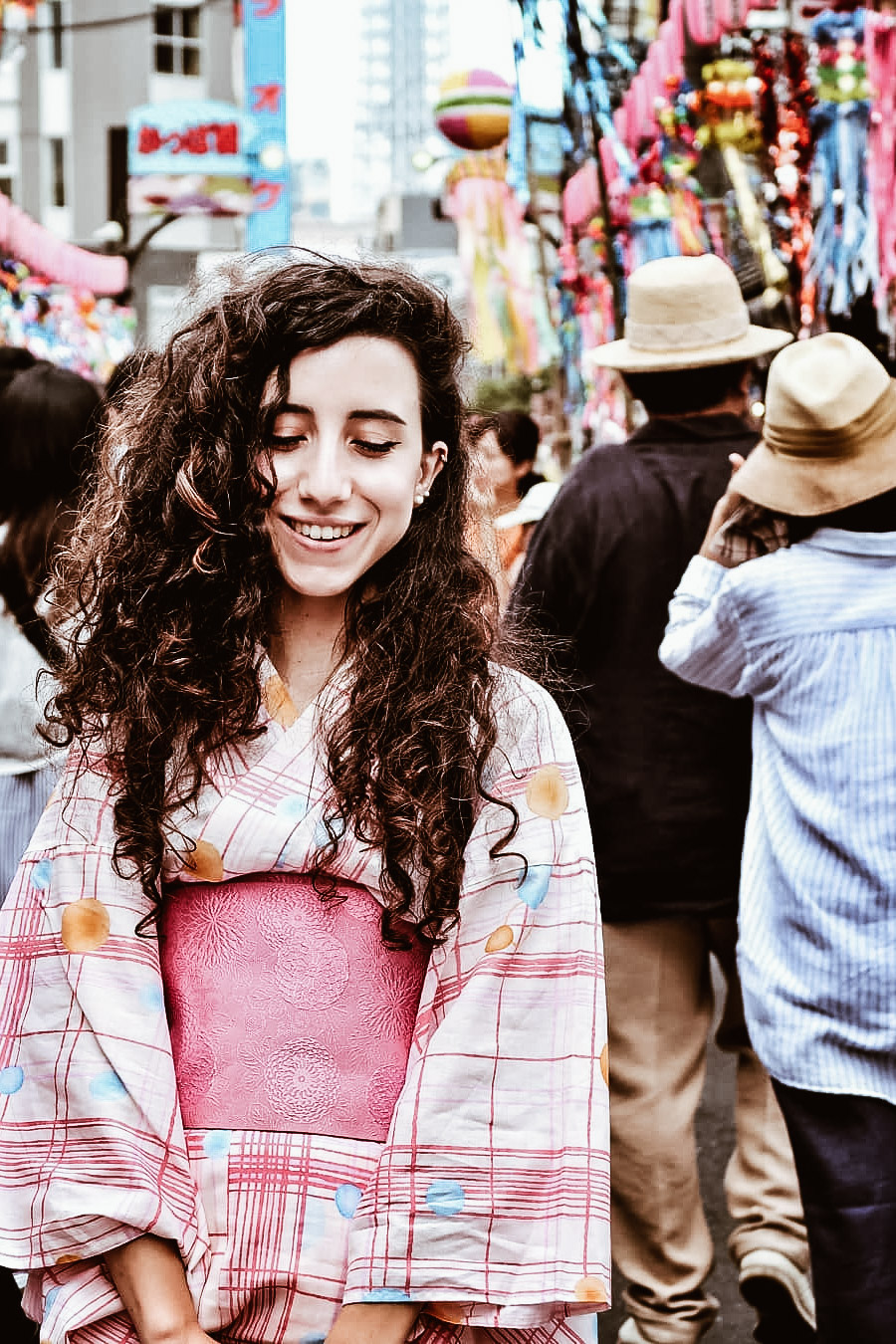
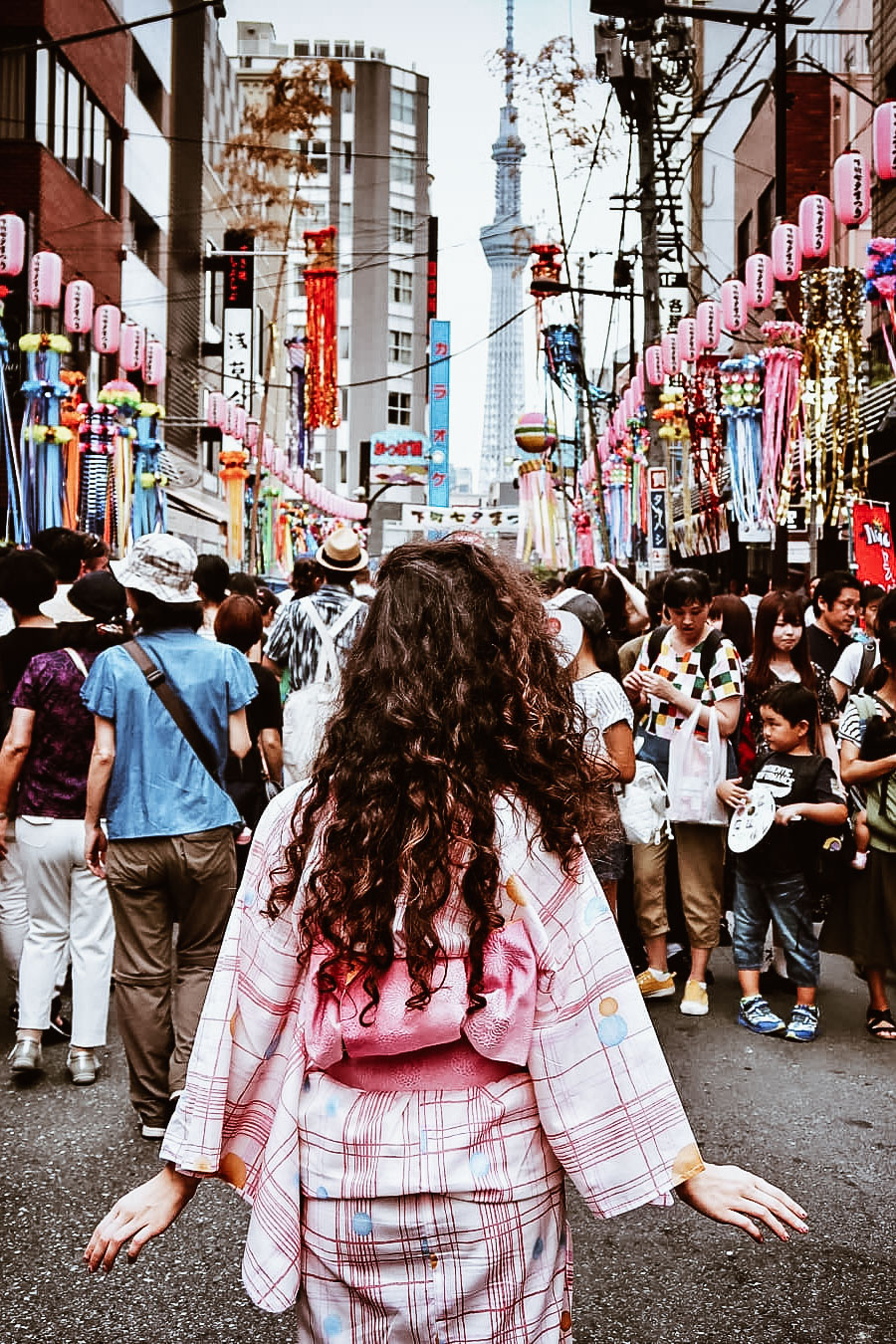
Follow Stefania
Blog: prossimafermatagiappone.com
Facebook: facebook.com/Prossimafermatagiappone/
Instagram: @prossimafermatagiappone
Japan Italy: SPINDLE presentation in Milan - VIDEO
Spindle lands in Italy, the largest Japanese ICO that aims to democratize investments in cryptocurrency
Together with TMP Group, we organized a dedicated event in Milan on June 4th for the presentation of SPINDLE, the first Japanese ICO platform that was created to connect users and crypto hedge funds through blockchain technology with fairness and transparency. World-renowned artist GACKT and Lina Seiche, senior analyst and evangelist of SPINDLE, participated in the presentation which was held at Talent Garden in via Calabiana.
Here's the official video of the presentation event held on June 4th 2018 at Talent Garden Calabiana, in Milan:
Japan Italy: SPINDLE, the biggest Japanese ICO and match-making platform, lands in Italy
Spindle lands in Italy, the largest Japanese ICO that aims to democratize investments in cryptocurrency
As many of you may know, Japan Italy Bridge is born from the minds of Erika Panzeri and Angela Antenucci and from their 6 year long experience with the Japanese world through the creation and managing of the website gacktitalia.com.
Together with TMP Group, we organized a dedicated event in Milan on June 4th for the presentation of SPINDLE, the first Japanese ICO platform that was created to connect users and crypto hedge funds through blockchain technology with fairness and transparency. World-renowned artist GACKT and Lina Seiche, senior analyst and evangelist of SPINDLE, participated in the presentation which was held at Talent Garden in via Calabiana.
SPINDLE is a project led by Blackstar, a Japanese company which was founded by a group of experts in the finance, investment, legal, and technology fields. The company currently operates out of offices based in Shanghai, London, and Tokyo. This initiative was spearheaded by the CEO of Bullion Japan Inc., Masamitsu Hirai, who is a veteran in investment funds with an established career as a fund manager and consultant for Funai Soken Holdings Inc..
SPINDLE aims to remove the existing concept of privileged investment, which refers to investments being almost exclusively accessible to only a small group of experienced investors. It aims to bring a form of democracy to investment activities, to make it available to everyone regardless of age, social background, and other such factors. It also aims to rework the concept of a fully centralized financial structure and develop an extensive global financial ecosystem through use of blockchain.
All the official photos from the event can be found below:
Press Coverage:
- finanza.tgcom24.mediaset.it
- ilbitcoin.news
- blockchainassociation.it
- finanzaoperativa.com
- blockchain4innovation.it









